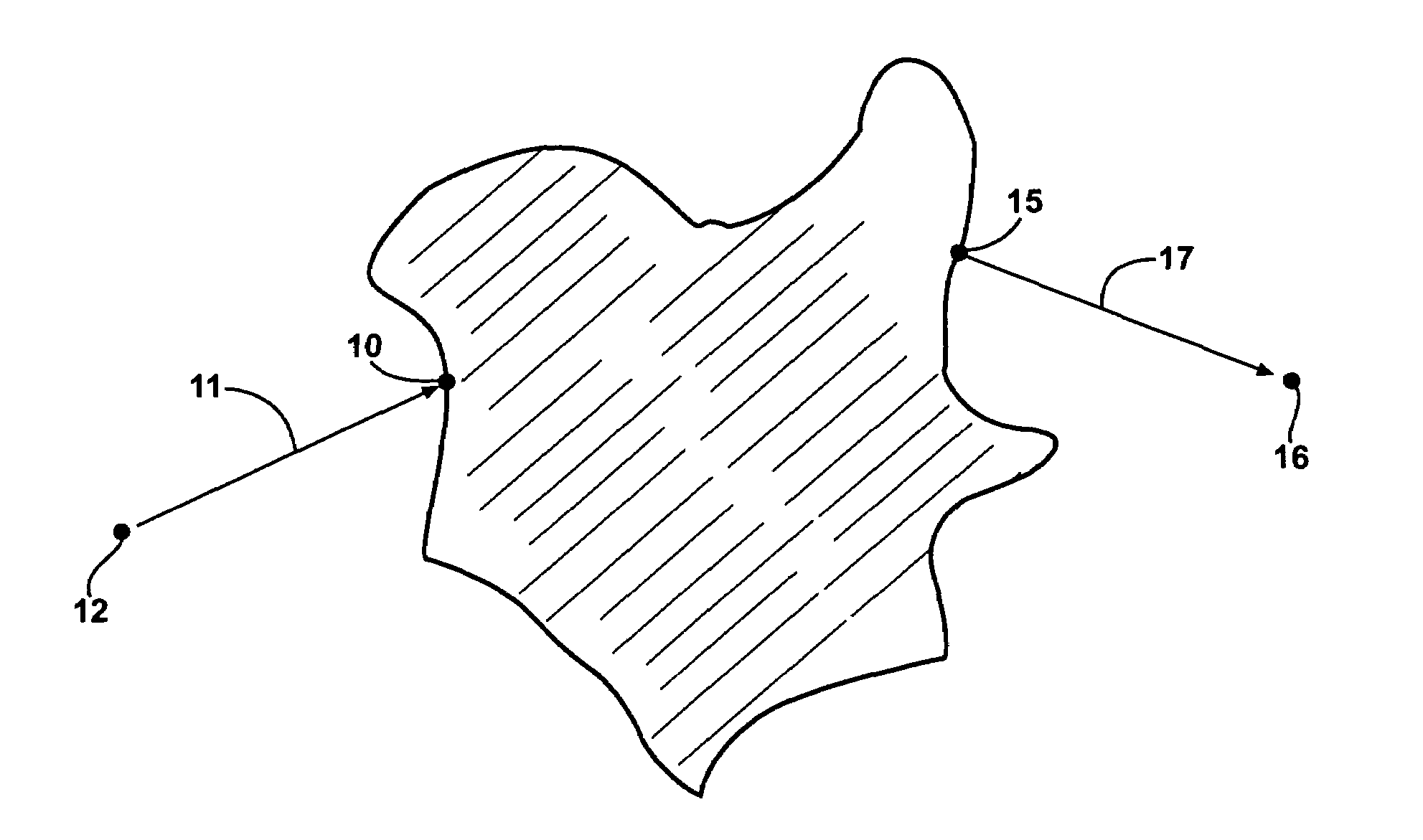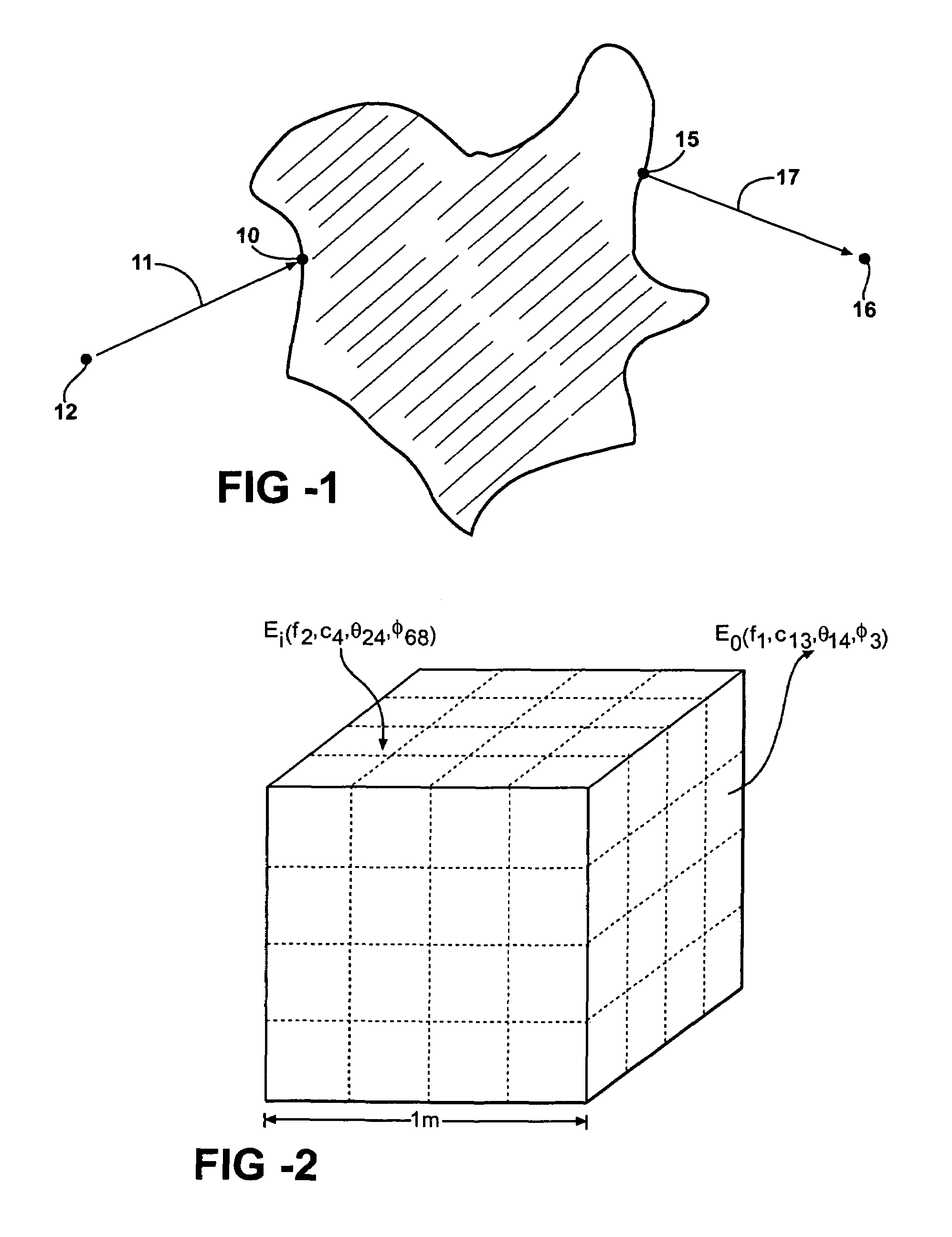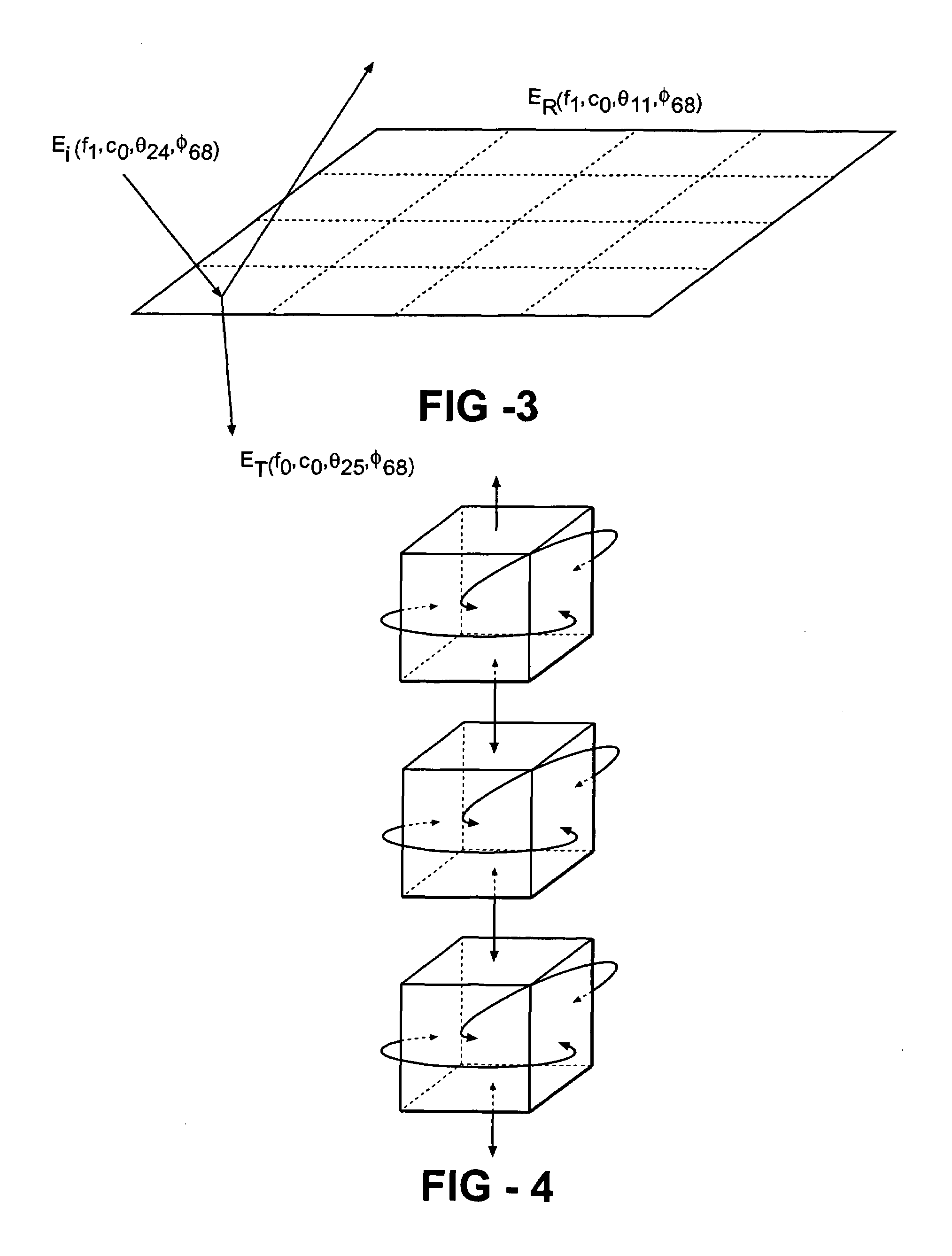Method and program product for determining a radiance field in an optical environment
a technology of optical environment and radiance field, applied in the direction of optical radiation measurement, photometry using electric radiation detectors, instruments, etc., can solve the problems of requiring a large amount of data manipulation, long monte carlo calculation, and no analytic solution for rte, so as to achieve efficient and finer processing of information and quickly determine the characteristics of an optical environment
- Summary
- Abstract
- Description
- Claims
- Application Information
AI Technical Summary
Benefits of technology
Problems solved by technology
Method used
Image
Examples
Embodiment Construction
[0027]The present inventions now will be described more fully hereinafter with reference to the accompanying drawings, in which some, but not all embodiments of the invention are shown. Indeed, these inventions may be embodied in many different forms and should not be construed as limited to the embodiments set forth herein; rather, these embodiments are provided so that this disclosure will satisfy applicable legal requirements. Like numbers refer to like elements throughout.
[0028]The present invention includes a method and program product for determining a radiance field in an optical environment. Generally, the method and program product generate a model of the optical environment, partition the modeled, optical environment into discreet, contiguous regions, or elements, and apply Monte Carlo techniques to determine an optical response function for each region for which the optical response function cannot be analytically defined. The optical response function provides an output ...
PUM
| Property | Measurement | Unit |
|---|---|---|
| grid size | aaaaa | aaaaa |
| zenith angle | aaaaa | aaaaa |
| concentrations | aaaaa | aaaaa |
Abstract
Description
Claims
Application Information
 Login to View More
Login to View More - R&D
- Intellectual Property
- Life Sciences
- Materials
- Tech Scout
- Unparalleled Data Quality
- Higher Quality Content
- 60% Fewer Hallucinations
Browse by: Latest US Patents, China's latest patents, Technical Efficacy Thesaurus, Application Domain, Technology Topic, Popular Technical Reports.
© 2025 PatSnap. All rights reserved.Legal|Privacy policy|Modern Slavery Act Transparency Statement|Sitemap|About US| Contact US: help@patsnap.com



